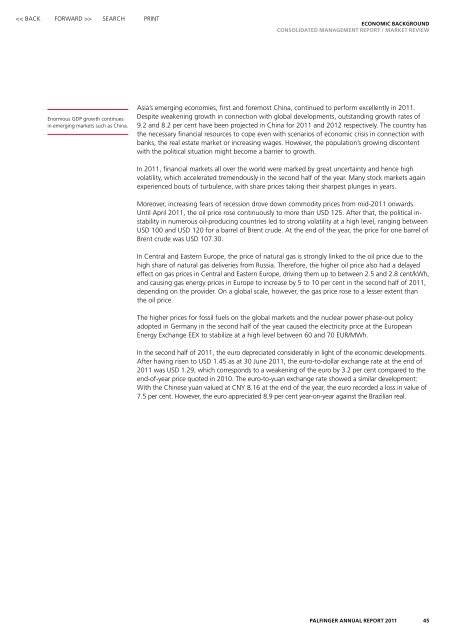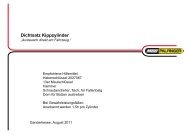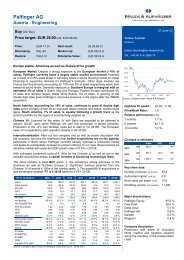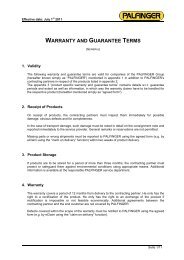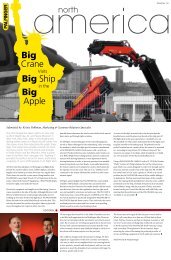palfinger at a glance
palfinger at a glance
palfinger at a glance
You also want an ePaper? Increase the reach of your titles
YUMPU automatically turns print PDFs into web optimized ePapers that Google loves.
search Print<br />
Economic Background<br />
Consolid<strong>at</strong>ed Management Report / Market Review<br />
Enormous GDP growth continues<br />
in emerging markets such as China.<br />
Asia’s emerging economies, first and foremost China, continued to perform excellently in 2011.<br />
Despite weakening growth in connection with global developments, outstanding growth r<strong>at</strong>es of<br />
9.2 and 8.2 per cent have been projected in China for 2011 and 2012 respectively. The country has<br />
the necessary financial resources to cope even with scenarios of economic crisis in connection with<br />
banks, the real est<strong>at</strong>e market or increasing wages. However, the popul<strong>at</strong>ion’s growing discontent<br />
with the political situ<strong>at</strong>ion might become a barrier to growth.<br />
In 2011, financial markets all over the world were marked by gre<strong>at</strong> uncertainty and hence high<br />
vol<strong>at</strong>ility, which acceler<strong>at</strong>ed tremendously in the second half of the year. Many stock markets again<br />
experienced bouts of turbulence, with share prices taking their sharpest plunges in years.<br />
Moreover, increasing fears of recession drove down commodity prices from mid-2011 onwards.<br />
Until April 2011, the oil price rose continuously to more than USD 125. After th<strong>at</strong>, the political instability<br />
in numerous oil-producing countries led to strong vol<strong>at</strong>ility <strong>at</strong> a high level, ranging between<br />
USD 100 and USD 120 for a barrel of Brent crude. At the end of the year, the price for one barrel of<br />
Brent crude was USD 107.30.<br />
In Central and Eastern Europe, the price of n<strong>at</strong>ural gas is strongly linked to the oil price due to the<br />
high share of n<strong>at</strong>ural gas deliveries from Russia. Therefore, the higher oil price also had a delayed<br />
effect on gas prices in Central and Eastern Europe, driving them up to between 2.5 and 2.8 cent/kWh,<br />
and causing gas energy prices in Europe to increase by 5 to 10 per cent in the second half of 2011,<br />
depending on the provider. On a global scale, however, the gas price rose to a lesser extent than<br />
the oil price.<br />
The higher prices for fossil fuels on the global markets and the nuclear power phase-out policy<br />
adopted in Germany in the second half of the year caused the electricity price <strong>at</strong> the European<br />
Energy Exchange EEX to stabilize <strong>at</strong> a high level between 60 and 70 EUR/MWh.<br />
In the second half of 2011, the euro depreci<strong>at</strong>ed considerably in light of the economic developments.<br />
After having risen to USD 1.45 as <strong>at</strong> 30 June 2011, the euro-to-dollar exchange r<strong>at</strong>e <strong>at</strong> the end of<br />
2011 was USD 1.29, which corresponds to a weakening of the euro by 3.2 per cent compared to the<br />
end-of-year price quoted in 2010. The euro-to-yuan exchange r<strong>at</strong>e showed a similar development:<br />
With the Chinese yuan valued <strong>at</strong> CNY 8.16 <strong>at</strong> the end of the year, the euro recorded a loss in value of<br />
7.5 per cent. However, the euro appreci<strong>at</strong>ed 8.9 per cent year-on-year against the Brazilian real.<br />
<strong>palfinger</strong> Annual Report 2011<br />
45


